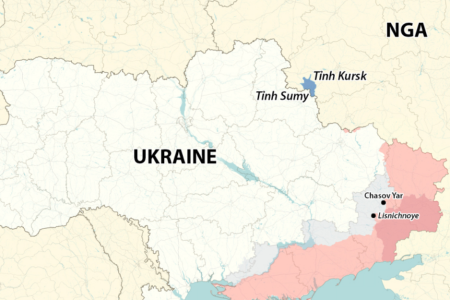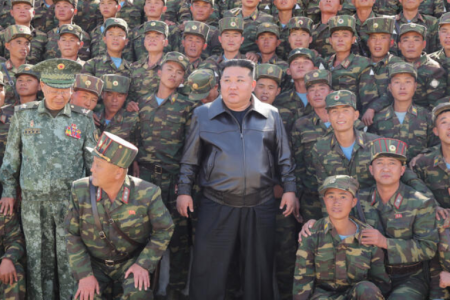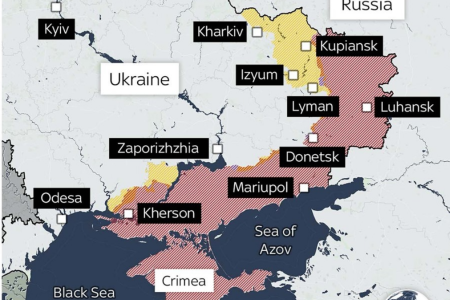
In the trend of the world to step up the fight against climate change, many international corporations are withdrawing from coal power plant projects, which are considered to cause a lot of pollution and increase gas emissions. Vietnam’s coal power industry is also facing the same situation.
To produce enough electricity to meet the needs of the economy, Vietnam still relies heavily on coal-fired thermal power plants. But according to Reuters and Nikkei Asia on February 26, Japan Mitsubishi corporation decided to withdraw from the Vinh Tan 3 coal power plant project in Vietnam’s central province of Binh Thuan, a project with a total investment of about $2 billion and expected to go into operation in 2024. According to Vietnam’s state-controlled media, the leadership of the Electricity and Renewable Energy Department (Ministry of Industry and Trade) has confirmed the above information. According to the leader of this agency, the shareholding structure of Vinh Tan 3 coal-fired power plant has 29% belonging to Vietnam Electricity (EVN), the rest is a stake in OneEnergy, a joint venture between Mitsubishi and Hongkong’s CLP Group.
Shareholder pressure
Mitsubishi’s decision shows that international energy companies and financial firms, including Japanese ones, no longer strongly support coal-fired power projects, under pressure from investors and environmental activists.
The latest example: According to the AFP news agency on March 11, 2021, under pressure from shareholders, British banking group HSBC, in the next shareholders meeting on May 28, will request to stop financial support to the coal industry from now until 2040.
Mitsubishi alone has pledged to reduce investment in coal power in order to comply with international goals of combating climate change. According to Nikkei Asia, this is the first time Mitsubishi withdraws from a coal-fired power project and the group will not build any new coal-fired power plants after Vietnam’s Vung Ang 2 project in which the group is involved. Instead, Mitsubishi plans to contribute to the development of energy projects that are less harmful to the environment, including liquefied natural gas and renewable energy, such as wind and solar power.
Responding to RFI Vietnamese language on March 8, 2021, Professor Pham Duy Hien, former director of Da Lat Atomic Institute, commented on Mitshubishi’s decision:
“By design, this plant has a capacity of up to 2,000 MW, a power generation unit accounts for a large part of Vietnam’s current coal-fired capacity. Mitsubishi withdraws from this project. The news is that banks like Standard Chartered are withdrawing funding for a second project, Vung Ang 2, with a capacity of 1,200 MW, but Mitsubishi and the Japanese government say they are still staying on this project.
Why did they withdraw from Vinh Tan 3? This is understandable because they are large corporations and they are committed to contributing to the fight against climate change, but coal power emits a lot of CO2. Many other companies from major countries have also followed this trend. So Vietnam also foresees it. ”
Internal pressure
Not only external pressure, but Vietnam’s coal power industry is also under pressure from domestic public opinion, partly because coal power plants can cause air pollution, according to Professor Pham Duy Hien:
“In Vietnam in general, the public is against coal power plants, partly because it increases the amount of CO2 causing climate change, but on the other hand, it can cause air pollution. Air pollution in Vietnam is serious, especially in the Northern Delta, where there are many coal-fired power plants running day-night. The air in places like Hanoi can be affected, making people object to coal electricity.
But I asked my friends at EVN (Vietnam Electricity), they said that the new coal-fired power plants have a relatively good technological process. The second is that they always have sensors located in the emission sites. Those sensors always transmit signals to the local Department of Natural Resources and Environment. Therefore, there is not much risk that these plants emit a lot of gas and dust.”
But the pressure of public opinion in the country is increasing. According to Lao Dong dated March 4, 2021, Vietnam Sustainable Energy Alliance (VSEA), Vietnam Union for Non-Infectious Diseases (NCDs-VN), and Vietnam Rivers Network (VRN) on March 2 sent a joint letter of recommendation to the Ministry of Industry and Trade for comments on the National Electricity Planning. These organizations petitioned the Ministry of Industry and Trade not to develop new coal power projects, especially in the next 10 years, instead to have synchronous solutions to further promote the development of renewable energy, especially solar and wind power.
The petition emphasizes: “The continued development of coal-fired power will put Vietnam in the opposite direction of the world’s green shift trend and efforts to implement the climate goals of the Paris Agreement on climate change. In addition, it increases the risk when Vietnam is facing the risk of having to depend on only a Chinese funding source. In addition, the increase of imported fuel sources for coal and gas for electricity production poses many risks to the national energy security.”
But in the immediate future, according to Professor Pham Duy Hien, it is likely that EVN will find new partners to build the Vinh Tan 3 coal power plant because those plants are very large and cannot be stopped. In fact, Vietnam itself is moving in the direction of gradually abandoning coal power to increase investment in renewable energy projects:
“Under the new power plan, called Power Plan VIII, Vietnam will not build a new coal-fired power plant in the period of 2026-2030. In the period from 2020-2026, it is still required to build as planned, the total capacity of the 15 projects is 18,000 MW.
In addition, as Vietnam does not have enough coal, therefore, according to the official report of the Vietnam Coal-Minerals Group, in 2020, Vietnam imported 12 million tons of coal to generate electricity. This figure will increase to 30 million by 2025 and by 2030 will rise to 50 million.
So, in the short term, coal power plant projects still increase in capacity compared to other power sources. For example, in 2020, coal-fired power accounts for 44% of total electricity output, but by 2030, although it increases in absolute terms, the rate will decrease to 40%. Why? That’s because we have gas plants. Gas currently accounts for only 17% of total capacity in 2020 but will increase to 21% by 2030.
A second good point, helping us to solve the problem, is renewable energy. The power generation capacity of wind and solar power plants currently only 5%, but by 2030 would increase to 15%. Few previously thought that renewable energy, mainly wind and solar, would make up such a significant share, but thanks to state policies, which are in fact subsidies, investor’s investment in construction is a lot. With a relatively strong electricity system in Vietnam where renewable energy currently accounts for 5% and will increase to 15% by 2030, that is a very large percentage.
Thus, in the electricity structure of Vietnam, policymakers also see clearly and also have a way to how, although coal-fired electricity still increases its rate decreases. It is worth noting that the import of liquefied gas is increasing sharply. The proportion of gas in general, of which the main liquefied gas, currently 17%, would increase to 21%, a very respectable amount.
But one problem is that continuing to implement coal-fired power projects will make it difficult to comply with Vietnam’s commitments to combat climate change, according to Pham Duy Hien:
“In the past, the Vietnamese government made a strong commitment to this because 5 years ago, Vietnam had a nuclear power development program. But developing nuclear power at a small scale would work for Vietnam. It is very good to be able to deal with its commitment to CO2 emissions. But the nuclear power program has now been canceled, so Vietnam faces difficulties: how to fulfill that commitment?”
Energy saving
In fact, in the power development strategy, there is another direction that Vietnam can do, which is to save energy. Professor Pham Duy Hien reiterates what he has emphasized for a long time, is that Vietnam’s electricity consumption efficiency is still very poor compared to many countries: “Their withdrawal from these projects (coal thermal power) will also cause difficulties, but it will not be to the point where Vietnam cannot do anything. However, importing too much coal is not good.
The most lasting solution to solving power problems in general, including coal power, is to re-plan the economy in the direction of not depending too much on domestic raw materials. Second, there is room to adjust, to implement the power development plan.
In fact, we consume electricity nowadays is still very permissive. There are no countries that still keep the elasticity of 2. The elasticity coefficient is the ratio of electricity growth to GDP growth. This coefficient in most countries is lower than 1, in Vietnam it is almost equal to 2. In the years before the Covid-19 pandemic in 2019, electricity growth has decreased, but remained close to double economic growth. From 2019 onwards, electricity growth is 10%, while average economic growth is only 5 or 6%.”
In the direction of promoting energy-saving to contribute to achieving the goal of fighting climate change, Vietnam has just received international financial support. According to the World Bank’s representative in Vietnam on March 8, 2021, this international financial institution, on behalf of the Green Climate Fund (GCF), has just signed a non-refundable aid agreement of $11.3 million with the State Bank of Vietnam to support the development of a commercial financial market for investment in energy efficiency in the industry.
According to Carolyn Turk, Country Director of the World Bank in Vietnam, “promoting energy efficiency is the best low-cost solution to achieving multiple goals at the same time: meeting energy needs, combating pollution and reducing greenhouse gas emissions while improving the competitiveness of businesses.”
Thoibao.de (Translated)



























